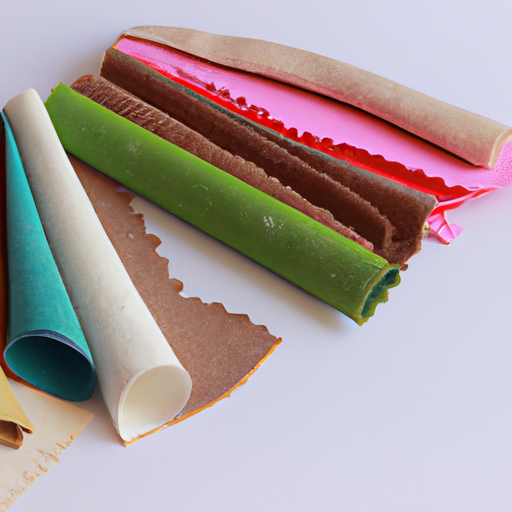Fabric Woven Non Woven Fabric Acrylic Painting Felt Sticky Felt Strip Roll China Manufacturer,
Table of Contents
Exploring the Benefits of Woven and Non-Woven Fabric for Acrylic Painting
Acrylic painting is a popular medium for creating art, and the type of fabric used can have a significant impact on the outcome of the painting. Woven and non-woven fabrics are two of the most common types of fabric used for acrylic painting, and each has its own unique benefits. In this article, we will explore the advantages of both woven and non-woven fabrics for acrylic painting.
Woven fabrics are made from interlacing threads that are woven together in a pattern. This type of fabric is strong and durable, making it ideal for acrylic painting. Woven fabrics are also highly absorbent, which allows the paint to be evenly distributed across the surface. Additionally, woven fabrics are less likely to fray or tear, making them a great choice for creating detailed paintings.
Non-woven fabrics are made from fibers that are bonded together using heat, pressure, or chemicals. This type of fabric is lightweight and flexible, making it easy to manipulate and shape. Non-woven fabrics are also highly absorbent, allowing the paint to be evenly distributed across the surface. Additionally, non-woven fabrics are less likely to fray or tear, making them a great choice for creating detailed paintings.
Both woven and non-woven fabrics have their own unique benefits for acrylic painting. Woven fabrics are strong and durable, making them ideal for creating detailed paintings. Non-woven fabrics are lightweight and flexible, making them easy to manipulate and shape. Both types of fabric are highly absorbent, allowing the paint to be evenly distributed across the surface. Ultimately, the type of fabric used for acrylic painting will depend on the desired outcome of the painting.
Crafting with Felt: Tips and Tricks for Working with Sticky Felt Strip Roll
Working with felt can be a fun and rewarding experience, but it can also be a bit tricky. Felt strip roll is a great material to work with, but it can be a bit sticky and difficult to manage. Here are some tips and tricks to help you get the most out of your felt strip roll projects.
1. Start with a clean surface. Before you begin working with felt strip roll, make sure your work surface is clean and free of debris. This will help ensure that your felt pieces stick together properly and don’t get stuck to the surface.
2. Use a cutting mat. A cutting mat is a great tool to have when working with felt strip roll. It will help protect your work surface and make it easier to cut the felt into the desired shapes and sizes.
3. Use a ruler. A ruler is essential when working with felt strip roll. It will help you measure and cut the felt accurately and evenly.
4. Use a sharp pair of scissors. A sharp pair of scissors is essential when working with felt strip roll. Dull scissors can cause the felt to fray and make it difficult to cut accurately.
5. Use a glue gun. A glue gun is a great tool to have when working with felt strip roll. It will help you secure the felt pieces together and make sure they stay in place.
6. Use pins. Pins are a great way to temporarily hold felt pieces together while you are working. This will help ensure that the pieces stay in place while you are working and make it easier to get the desired results.
7. Use a pressing cloth. A pressing cloth is a great tool to have when working with felt strip roll. It will help protect the felt from heat and make it easier to press the pieces together.
By following these tips and tricks, you can get the most out of your felt strip roll projects. With a little practice and patience, you can create beautiful and unique projects with felt strip roll.
An Overview of the Different Types of Fabric Manufactured in China
China is one of the world’s leading producers of fabric, with a wide variety of fabrics being manufactured in the country. The types of fabric produced in China range from natural fibers such as cotton and silk to synthetic fibers such as polyester and nylon. Each type of fabric has its own unique characteristics and uses.
Cotton is one of the most popular fabrics produced in China. It is a natural fiber that is lightweight, breathable, and durable. Cotton is often used to make clothing, bedding, and other household items. It is also used to make towels, sheets, and other items that require absorbency.
Silk is another natural fiber that is produced in China. It is a luxurious fabric that is lightweight and soft. Silk is often used to make clothing, lingerie, and other items that require a luxurious feel.
Linen is a natural fiber that is produced in China. It is a strong and durable fabric that is often used to make clothing, bedding, and other household items. Linen is also used to make curtains, tablecloths, and other items that require a strong and durable fabric.
Polyester is a synthetic fiber that is produced in China. It is a lightweight and durable fabric that is often used to make clothing, bedding, and other household items. Polyester is also used to make curtains, tablecloths, and other items that require a lightweight and durable fabric.
Nylon is another synthetic fiber that is produced in China. It is a strong and durable fabric that is often used to make clothing, bedding, and other household items. Nylon is also used to make curtains, tablecloths, and other items that require a strong and durable fabric.
These are just a few of the many types of fabric produced in China. Each type of fabric has its own unique characteristics and uses, making it an important part of the global textile industry.
